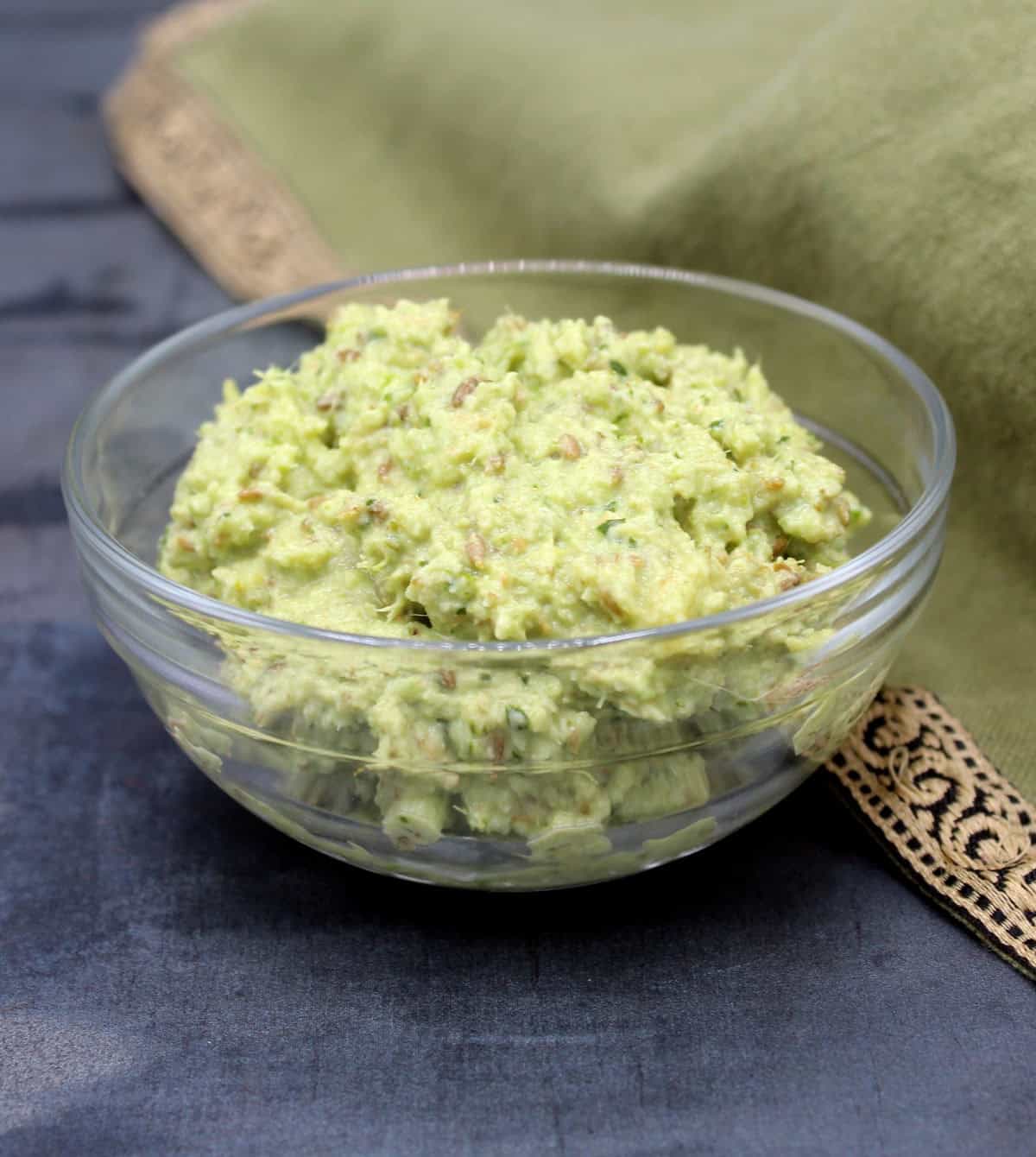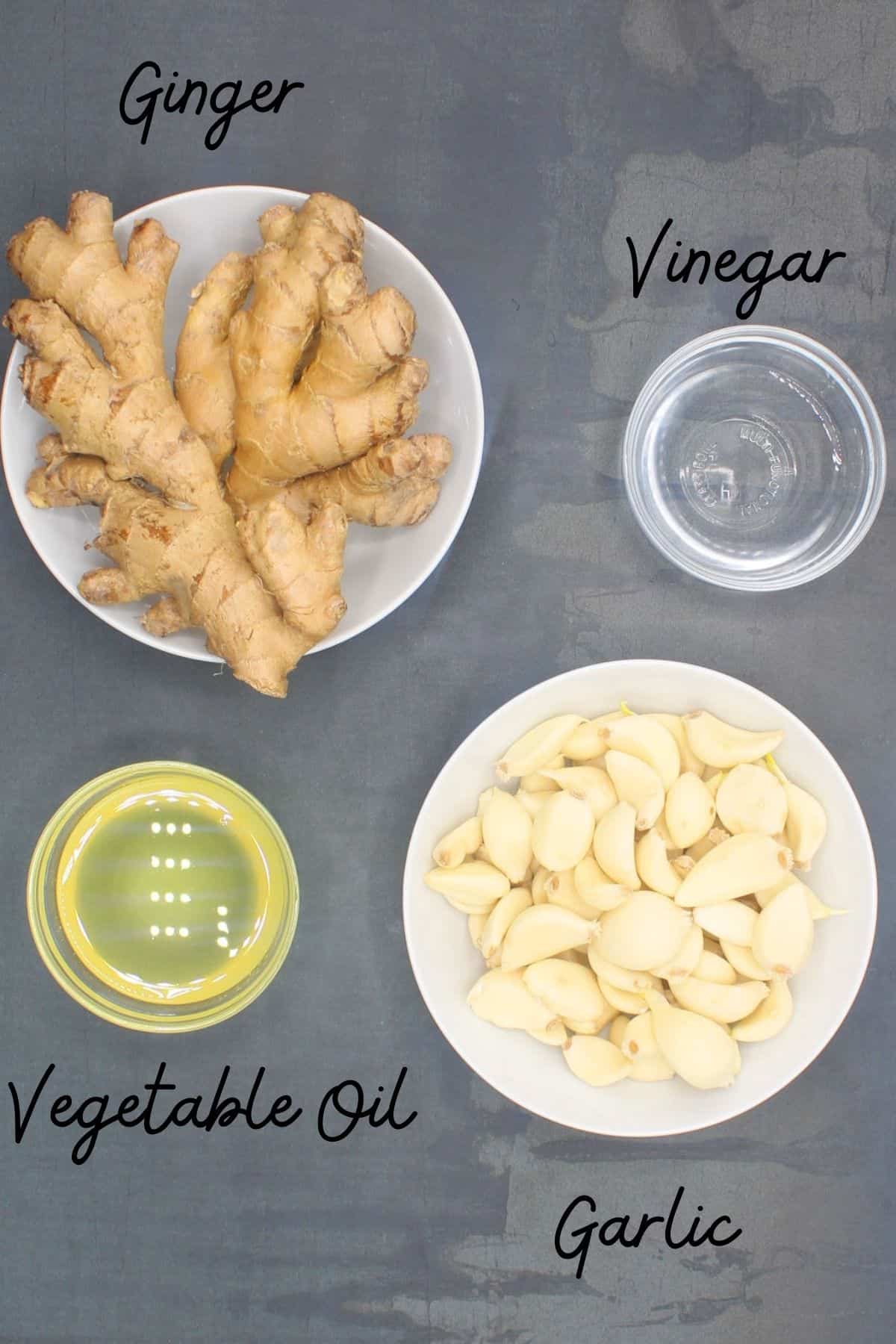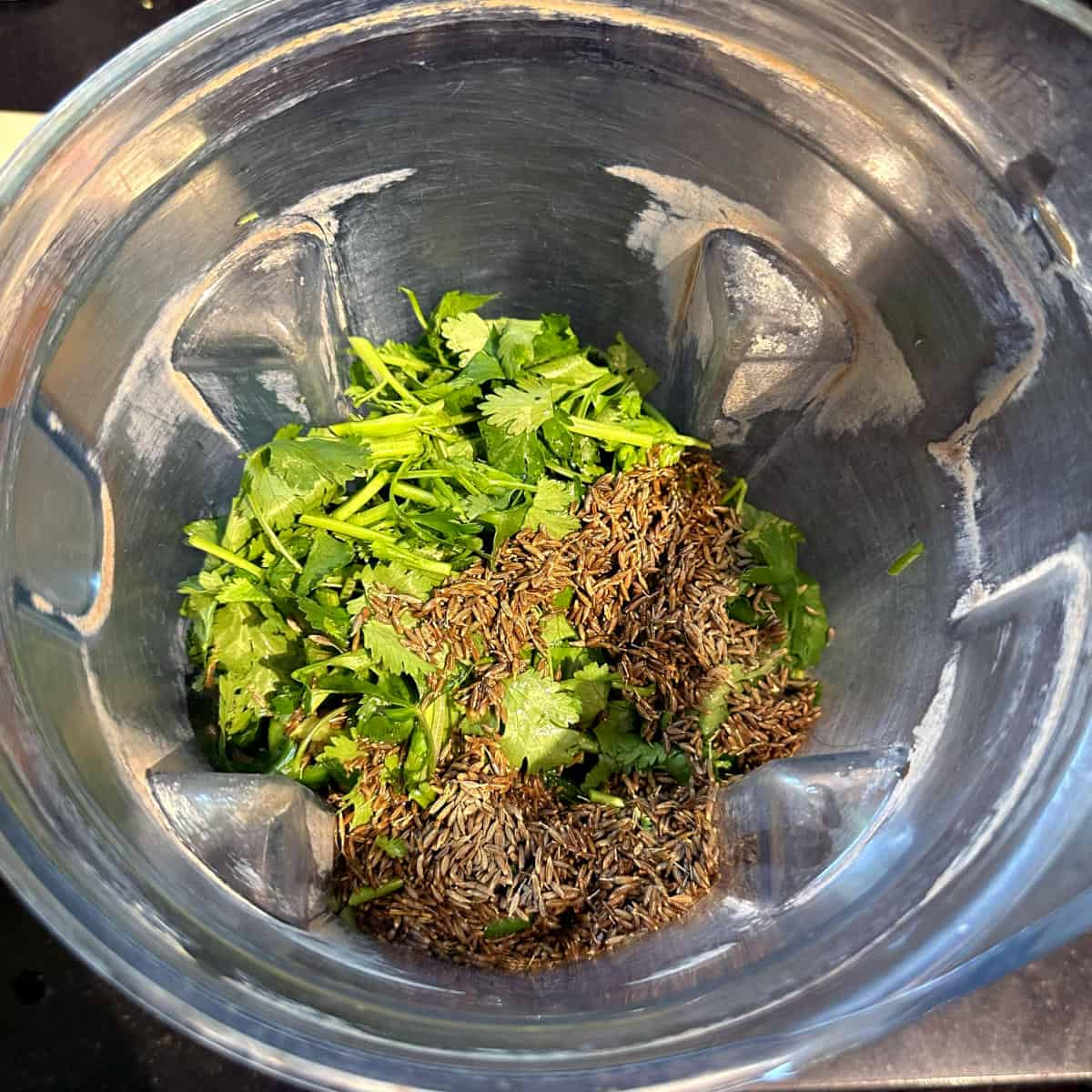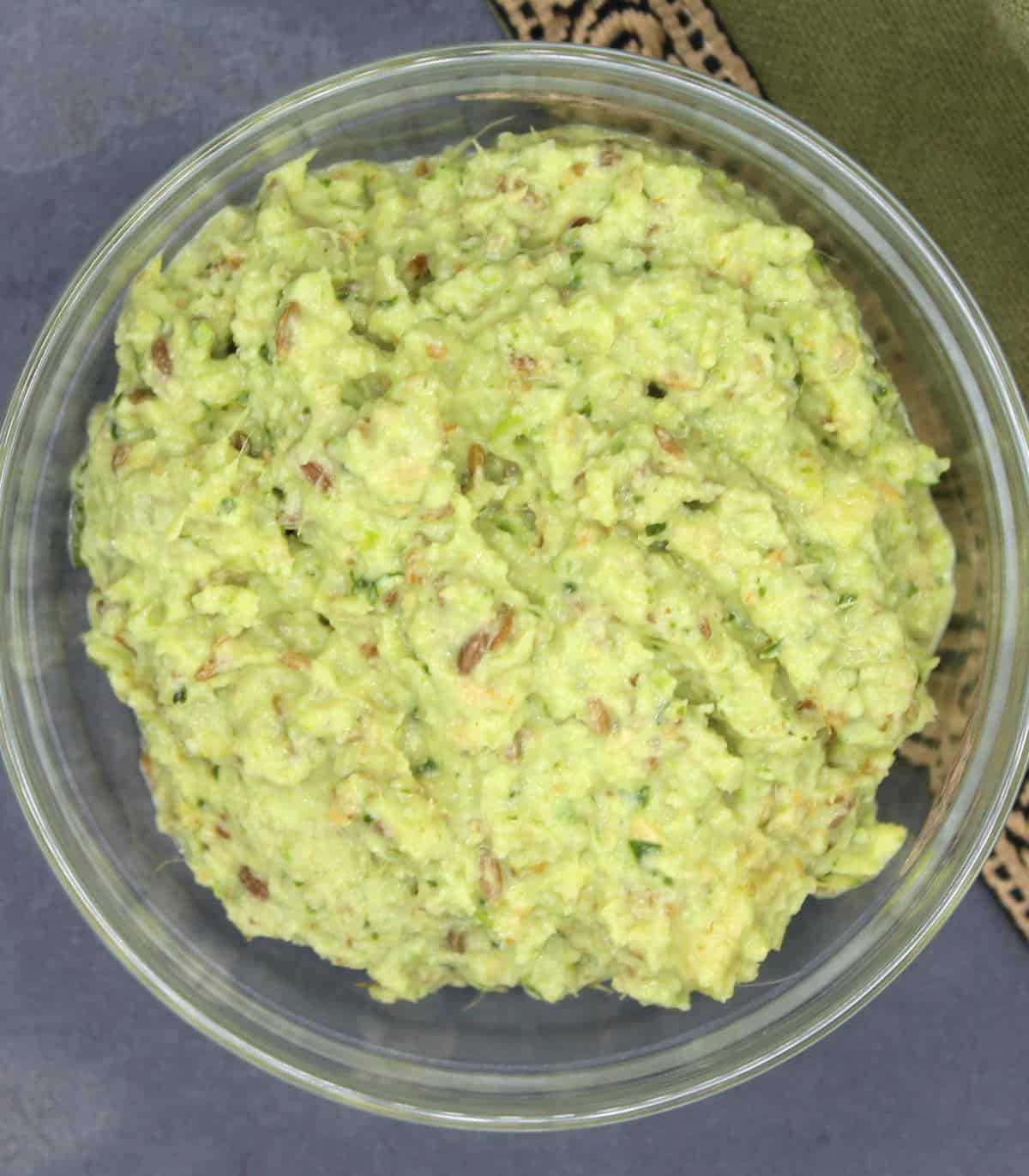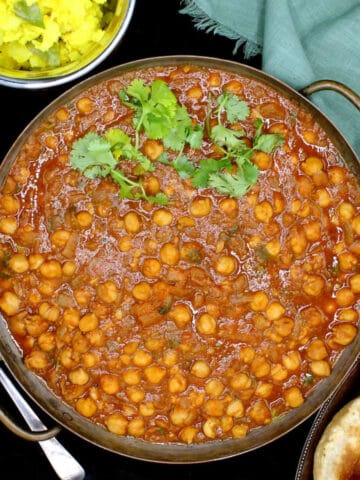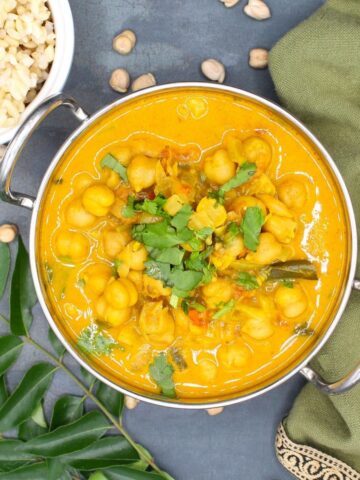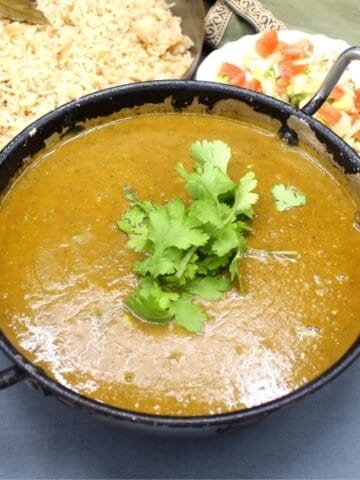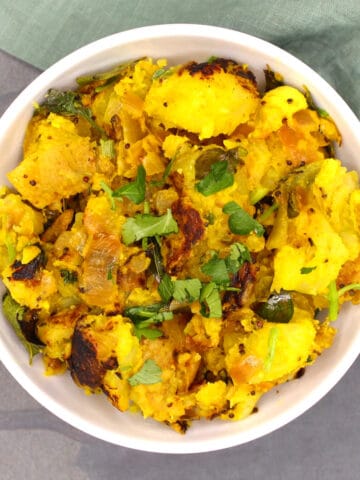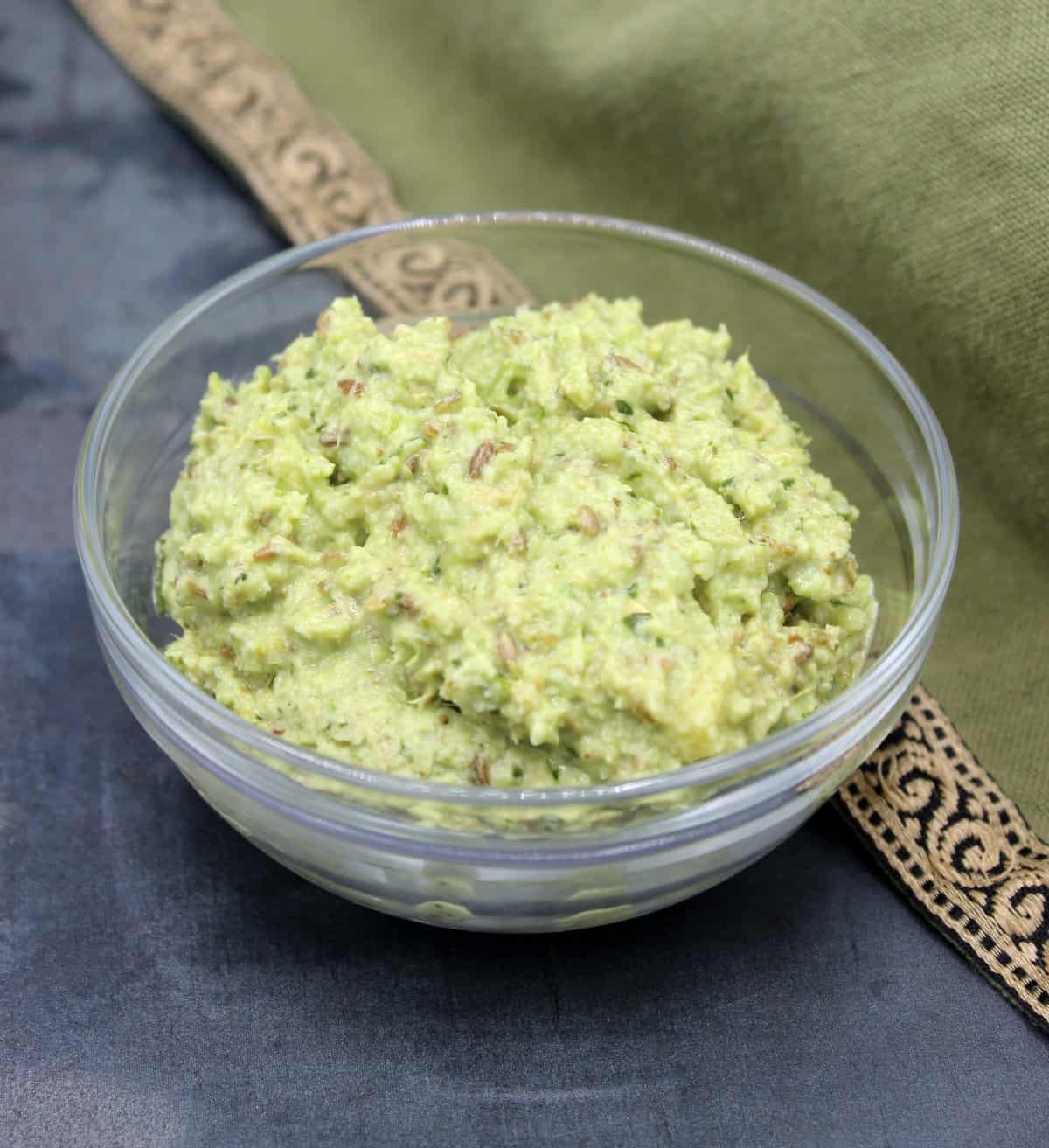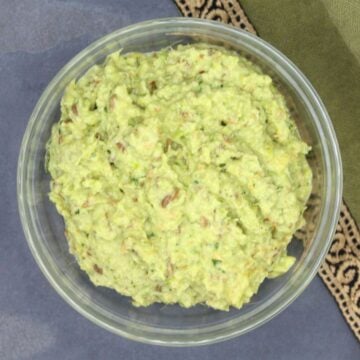Cooking Indian food on weekdays can be easy, especially if you take some time to meal prep. This can include making curry bases and sauces that can be frozen or refrigerated, like a basic tomato onion sauce, a tikka masala sauce and curry paste. A more basic recipe that can also save you time in the kitchen is this ginger garlic paste. Many Indian recipes call for both ginger and garlic or a ginger garlic paste, and making the paste from scratch for every dish you cook takes up precious minutes. You have to peel the garlic, wash the ginger, chop it, and then crush all of it with a mortar and pestle or in a blender or food processor. Which you then have to wash. If you could save the five minutes or so of doing that everytime you cook Indian food, why wouldn’t you? Making a large batch of ginger garlic paste is incredibly easy. You can do it on a weekend or whenever you have a few minutes to spare, and voila, you will have it ready to go whenever the mood for some Indian food strikes!
Why make ginger garlic paste?
Indian and Asian stores sell ginger garlic paste in jars and I have, in the past, used them. But they never tasted quite right and the ingredient list, long with emulsifiers and preservatives, made me uneasy. Both ginger and garlic are healthy ingredients, so why spoil them with all of those additives? That’s why I started to make my own, much healthier version and I recommend you do that too. You can even tweak the taste to your liking and include more ingredients, like cilantro and green chilli peppers, to add even more flavor to the paste and to the dish. Some Indian cooks swear that nothing can equal the flavor and aroma of freshly made ginger garlic paste, but to that I say, not really. Made right, a homemade ginger-garlic paste that has been stored for a few weeks in the fridge or freezer will result in no discernible flavor difference whatsoever. The key is to use natural ingredients to preserve the freshness, aroma and flavor of the ginger and garlic: oil and a touch of vinegar. Vinegar is not an ingredient widely used in Indian cuisine (except by some Christian communities around the country). But you won’t be adding any significant amount of it to the ginger garlic paste – just two tablespoons – which is not going to make any difference to the flavor of the dishes you’ll make with the paste. Vinegar is a powerful, natural preservative and, along with the oil, it will keep the flavors and freshness of the ginger garlic paste sealed in. The vinegar and oil also help blend the ginger and garlic into a coarse paste without the need to add water. The presence of water can quickly cause the ginger garlic paste to deteriorate, so don’t add any to the recipe.
Ingredients
Ginger. If you use organic ginger you don’t need to peel it. If using ginger that’s not organic do peel it. A spoon is a great tool for peeling ginger. Garlic. You need lots of garlic for this recipe, and there’s no shame in using pre-peeled garlic. I often do. Or use your favorite technique to get the papery skins off the garlic. I like whacking the garlic with a pestle or a flat knife, which makes it easy to pop out the garlic cloves. Vinegar. Just plain white vinegar. Save your apple cider vinegar and balsamic vinegar for something else. Oil. I use avocado oil. Use that or any neutral oil in this recipe. I’d recommend not using olive oil or coconut oil because both would add their strong flavor to the paste, which may not work with some Indian recipes. Optional ingredients: Cilantro adds amazing freshness and more flavor to the recipe. Green chilli peppers, like jalapeno, add spice, which means you already have one more ingredient on hand when you are cooking an Indian dish (most Indian dishes will call for some chilli). Cumin seeds add wonderful flavor and are great in all savory Indian dishes. You can add one or all of these three ingredients to the ginger garlic paste.
How to make ginger garlic paste
Storage instructions
Refrigerate: The paste can be stored in the fridge for up to four weeks in an airtight jar. While cooking take as much as you need and return the rest to the refrigerator. Freeze: Freeze one-tablespoon-size servings of the ginger-garlic paste in an ice cube tray. Place the frozen cubes in a freezer safe bag and take one or more as needed. The frozen ginger-garlic paste can be stored for up to six months. No need to thaw the paste before cooking–it will thaw quickly enough once you add it to the pot while cooking.
How to cook with ginger garlic paste
You can use this homemade ginger garlic paste in any Indian recipe that calls for it. You can also substitute it in recipes that call for using ginger and garlic separately. For instance, if a recipe says to add three cloves of garlic and an inch-size knob of ginger, you can replace it with a tablespoon of ginger-garlic paste. Ginger garlic paste is typically added to the recipe right after you saute the onions and, sometimes, before or along with the onions. In recipes that don’t call for onions saute the ginger-garlic paste with other tadka ingredients in a bit of oil. Remember, the ginger and garlic are raw and they need to be cooked for their flavors to mellow down and complement other ingredients in the recipe.
Recipes to make with ginger garlic paste
Recipe card
Check to get new recipe updates by email.
